We Recently explored the Shenandoah region in a Minnie Winnie, and it was perfect for a low-stress vacation. Here are some reasons why you should rent an RV.
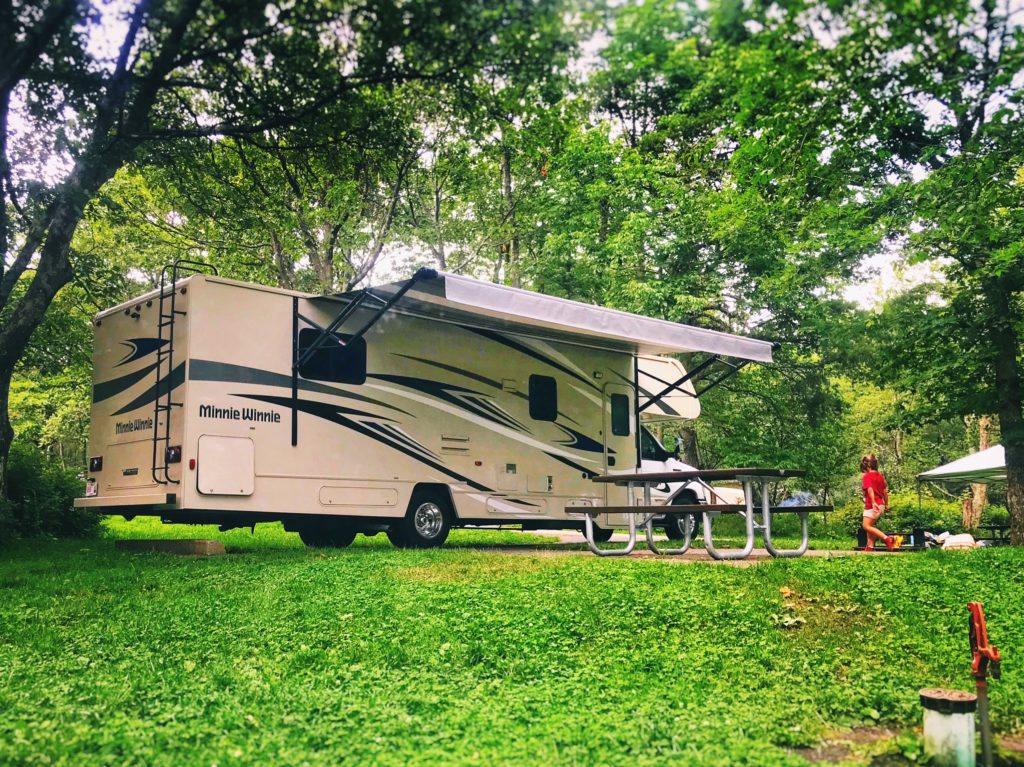
This post in partnership with GoRVing, all thoughts and opinions are my own.
Did you know it’s possible to test drive the RV life? I didn’t, until after I spent a week in a MinnieWinnie on the road through Virginia. And just like that, I caught the RV bug, and have been pricing out the cheapest RV options.
I recently discovered rental RV’s, which, as it turns out is an economic way to not only try out the camper lifestyle but lets you test out different makes, models, and sizes so you can find the RV that is right to invest in for your family. It also is possible to rent an RV in far off destinations so that you can fly in and spend more time at your chosen location.
It is cheaper than you think to Rent an RV
Renting an RV for your vacation is pretty comparable in cost to a hotel room, in most cases less. If you book well in advance you can actually get a pretty amazing deal. Some sites to check out are GoRVing, Outdoorsy, and El Monte RV. I was able to easily find several Class C RVs that sleep 8 for under $200/day. For traveling with a few adults and kids, that brings in the cost at considerably less than 2-3 hotel rooms, or an airBnB to sleep as many. If you go smaller, or for a towed unit, the price can drop to under $150/day. Most 22-25’ RVs are quite adequate for a family of four, so this could be the best option for your budget.
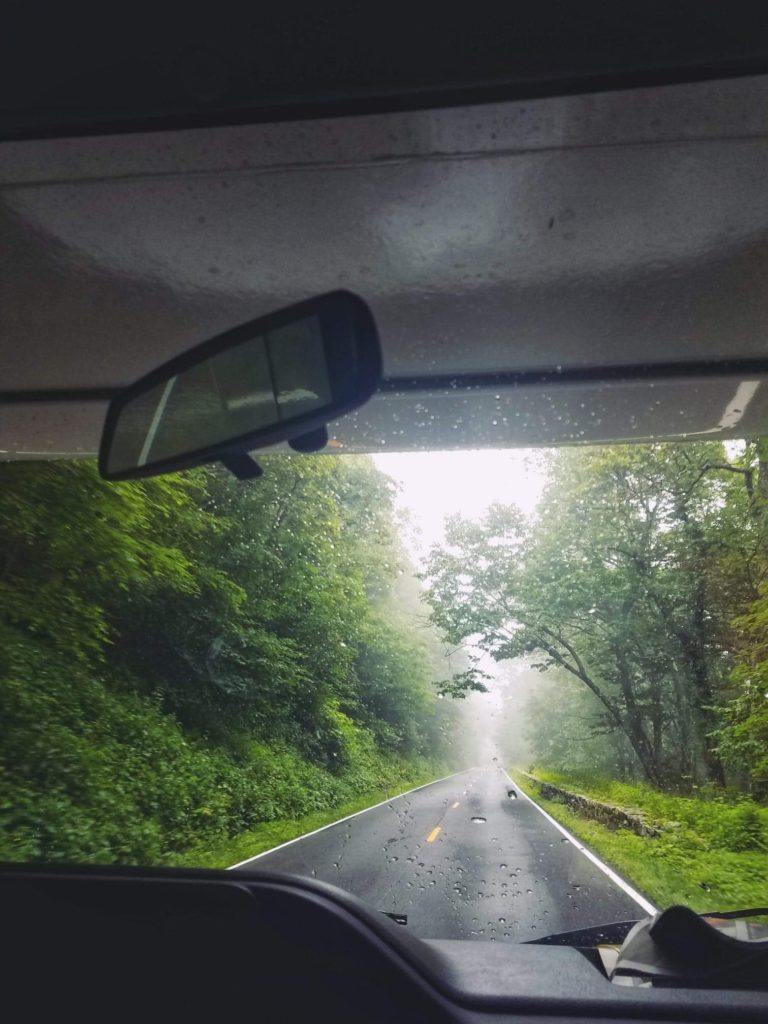
Tips for First Time Renting
Try to find an RV to rent close to your destination if you can. This will considerably reduce the cost and stress levels involved. They do require quite a bit of fuel, and as a first-timer, you are probably not going to be terribly comfortable on the highway for long periods. I went for a circuit that had my first campsite farthest away, moving closer to the pick-up point as we went. It also kept me to large easy highways to start, and I did not take on any windy mountain roads until after a few days of getting comfortable.
After a quick stop at the Manassas National Battlefield to earn a Jr Ranger Badge, only a few miles from my pickup point, I embarked on a straightforward 4 hour trip down Interstate 81. It was somewhat nerve-wracking, but the Minnie Winnie I was testing out handled beautifully. Even though it was easier to drive than I anticipated, I do think that it would have been incredibly tiring to pick it up closer to home and make the entire 12-hour drive down from Maine with it. For anything longer than 3-4 hours I would have needed a second driver.
Make sure that you do some practice driving, especially if you are uncomfortable with large vehicles. Take a few turns around the parking lot, backing and turning, watching the mirrors carefully. A class C does overhang in the back like a school bus, so you need to be aware of the swing so that you don’t clip something with it.

Why choose to rent an RV over camping?
I will always be an advocate of tent camping, but everything has its plusses and minuses. For the road trip with multiple stops, the RV wins out.
Dry Shelter:
The weather on our trip was mostly fair, but it did rain every day. There isn’t much more annoying than having to throw a wet tent into the back of the car and set it up again that evening.
Relocation:
Clearly, the setup/breakdown time is considerably reduced. When we switched campsites, all that I had to do was pull in the slide-out and we could hit the road.
Change of Plans:
Decide that the campsite wasn’t what you were looking for? Traffic is awful and you won’t make it? Get in late at night? You’re covered. Your campsite is with you wherever you go.
Bathrooms:
This is a convenience that hadn’t even occurred to me at first. But when your 6-year-old needs to use the bathroom in the middle of the night and isn’t comfortable walking to the nearest outhouse in the dark, you don’t have to put your boots on.
Time for lunch, dinner, or a Nap:
One thing that immediately inflates the cost of any road trip is eating. The kids are starting to get anxious, rest stops are showing paltry offerings for extravagant prices, and you just want to take a break. So, take one. Pull the RV over into a rest stop, way station, or any large parking lot. Suddenly the only thing separating you from lunch is opening the refrigerator. There are people who will even advocate making coffee and sandwiches while driving, I won’t. There is no way that I want the kids wandering around out of their seat belts on the highway. But when you rent an RV, the ability to make any stop a full-service rest stop is a huge bonus.
Before picking up the RV we were hit late in the evening with a deluge of epic proportions. Even commercial trucks turned on their flashers or pulled off the highway. I parked in a closed rest area for about an hour until visibility was reasonable again. We were only about 50 miles from our stopping point for the night, and I was spent from driving all day. If I had had the RV, we would have slept there without question.
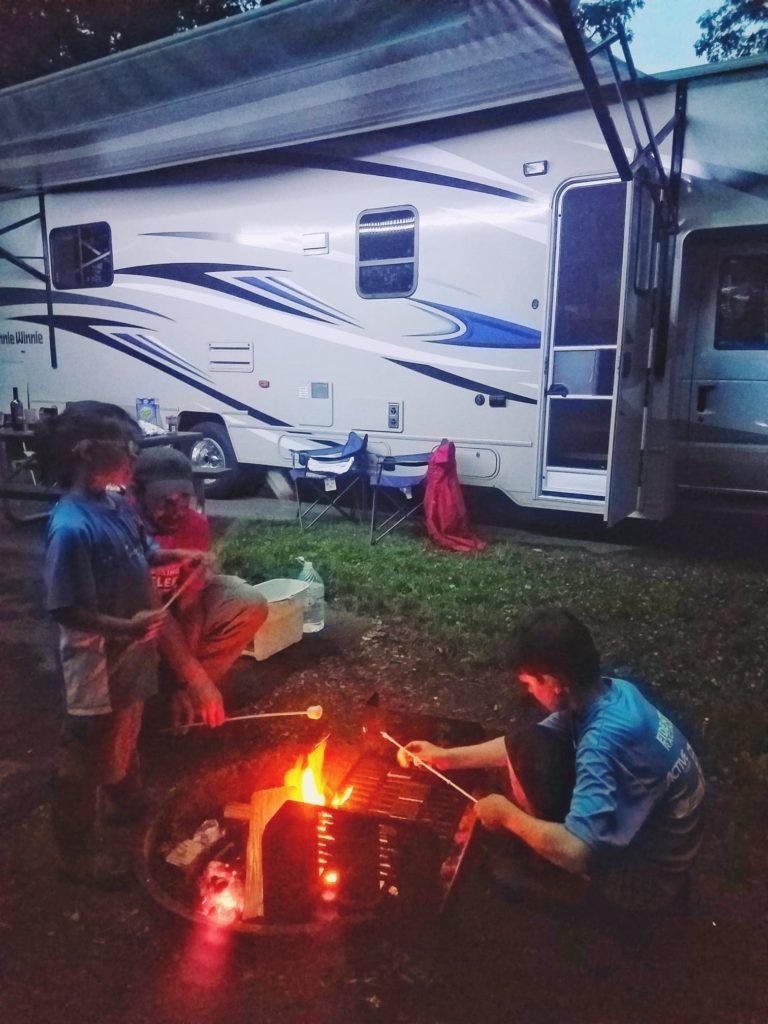
What kind of RV should you rent?
Class A and C RVs
For family vacations, I am a huge advocate of Class C RVs. They have more sleeping area for the size, and drive pretty easily, like a small school bus. Class As tend to be a little larger, with more living space amenities and windows. I may have gone a bit bigger than I needed. Coming from a background of living aboard boats and camping in tents, I always figure that you can only realistically put 2/3 of the advertised capacity in comfortably. This was not the case. The Minnie Winnie we tested through GoRVing was advertised to sleep 8. Once inside, we realized that sleeping 8 meant 4 beds, 3 queen-size or larger. This extra space meant that I could leave two beds entirely set up all of the time, and not sacrifice any of our living space.
Incidentally, at our last stop, I helped a family park their rental Minnie Winnie next to ours. With 4 kids, their older two near adult size, it was a comfortable fit for them. Having had this trip, I would likely go a little smaller in the future, mostly for parking purposes. Though, I can also see splitting an 8 person RV with a few family members without a problem.
Towed RVs
There is also the option to rent a towed RV. Personally, this is a tough one. The ability to drop off the RV at camp and travel locally in the truck is a pretty good deal. And the price per square foot of living space is considerably less. The big downside is the size truck that you will need to have. The Toyota Tacoma has been the best selling mid-size pickup for more than a decade, but up through the 2018 base model, maxes out at 3500lbs towing capacity, and an F-150 at roughly 5,000 lbs. Once you get past the smaller campers, the towed trailers are easily 4-8,000 lbs, and this puts most mid-size trucks and SUVs out of the running. (note- this is the dry weight, once you add water, waste, fuel for the generator and all your supplies, it goes up quickly) If you already have a capable truck, it is a great option though. The other downside is that towed trailers are more difficult to drive than single-piece units if you don’t have much towing experience.
Where should you park your RV?
There are a variety of campgrounds with varying levels of amenities. Most large parks will have some RV spots, but you should plan on booking your site well in advance. They do fill up a bit quicker than tent sites. And there are many people that return to the same site year after year. We stopped at these two sites:
Yogi Bear’s Jellystone Park and Camp Resort in Natural Bridge Station, Virginia
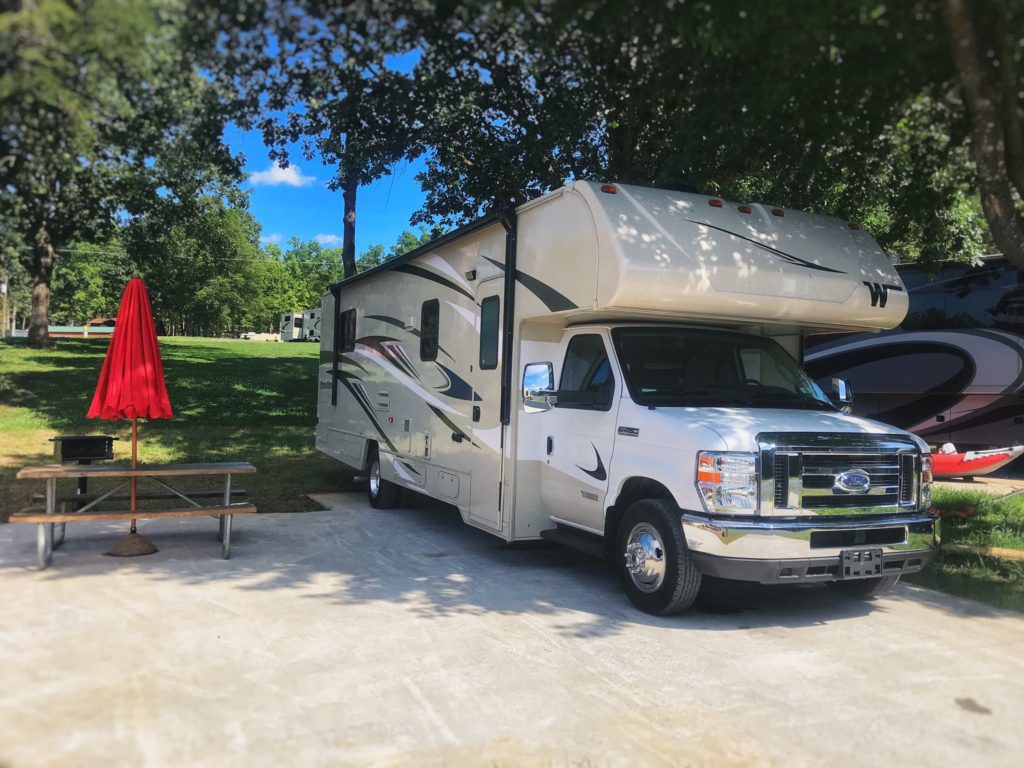
Jellystone is a full-service camp resort. We stopped here for a few days so that I could take some time to figure out the RV and set the kids loose on the water slides. Full-Service RV hook-up sites start at $61/night and include power, water, and sewer services. These were incredibly convenient to have, especially as I had no idea what our consumption rates would be at that point. We stayed here for three nights, and it gave us the freedom from worrying about holding tanks and running the generator.
Big Meadows Campground
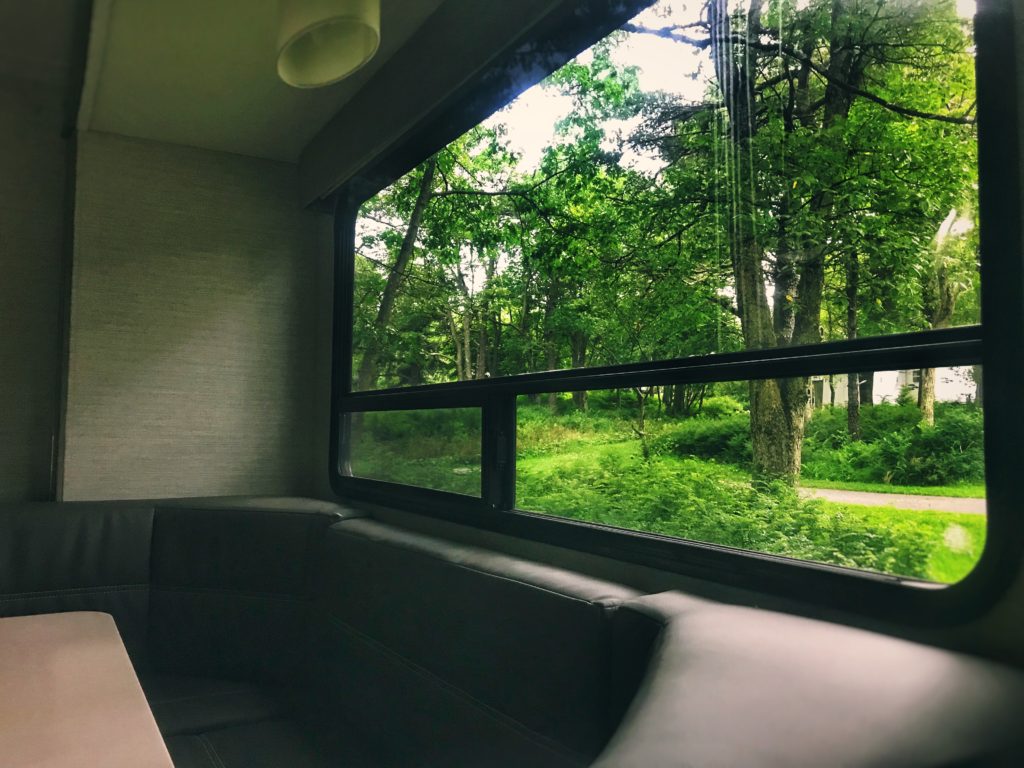
Our second stop was at Big Meadows in Shenandoah National Park. The cost here is $20/night, whether you have a tent, RV or camper. The sites were clean and had decent separation between them. We really did not notice the lack of amenities either. At first, I was worried about limited generator hours, but was easily able to charge the batteries each day. And after three days / two nights we were still at less than 1/4 tank of waste, and had 2/3 of our potable water left. So our Minnie Winnie proved to be quite self-sufficient.
An RV is also great to rent for Far off destinations
Alaska
This is on my RV trip bucket list. I have seen hundreds of RVs on the Richardson Highway in South Central Alaska and think that it would be a perfect way to explore our last great frontier. My kids haven’t gotten to visit there yet, and I’d love to get them into both Denali and Wrangell St Elias National Parks for Junior Ranger Badges.
Hawaii
There are even options for renting RVs on the island of Oahu for less than $200/night. And from my experience, having the freedom to travel around the island is a must when visiting. The last time I visited I stayed at an Airbnb on the North Shore, but would definitely consider the RV route for a return trip.
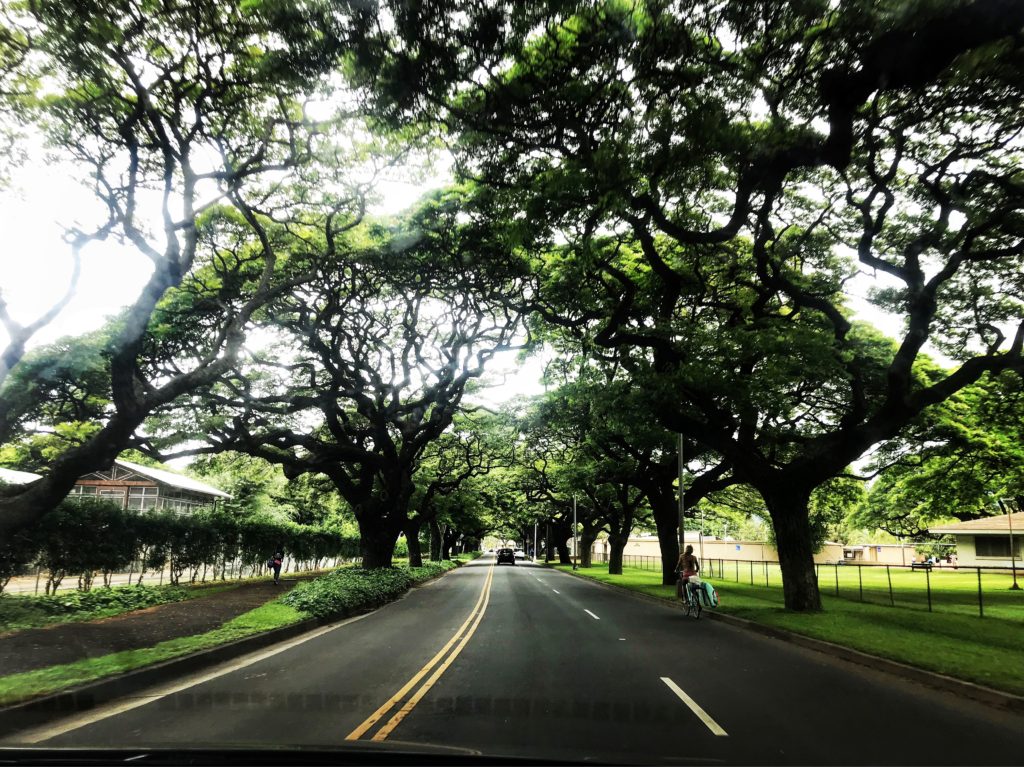
Ready to plan an RV adventure? Visit GoRVing to learn about RVs, campgrounds and get yourself ready for the road!
If you enjoyed these travel tips, or any other post on Real Life with Dad, be sure to follow us on FaceBook, Twitter and Instagram @RealLifeWithDad for our next adventure!
[…] to plan an RV adventure? Learn more about our RV trip in a Minnie Winnie, and visit GoRVing to learn about RVs, campgrounds and get yourself ready for the […]